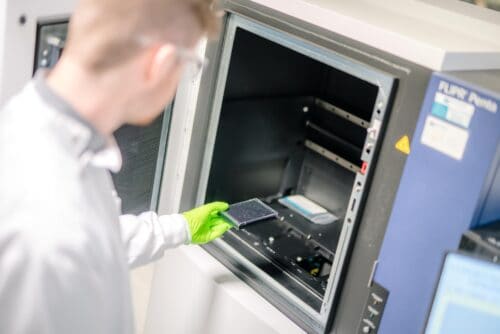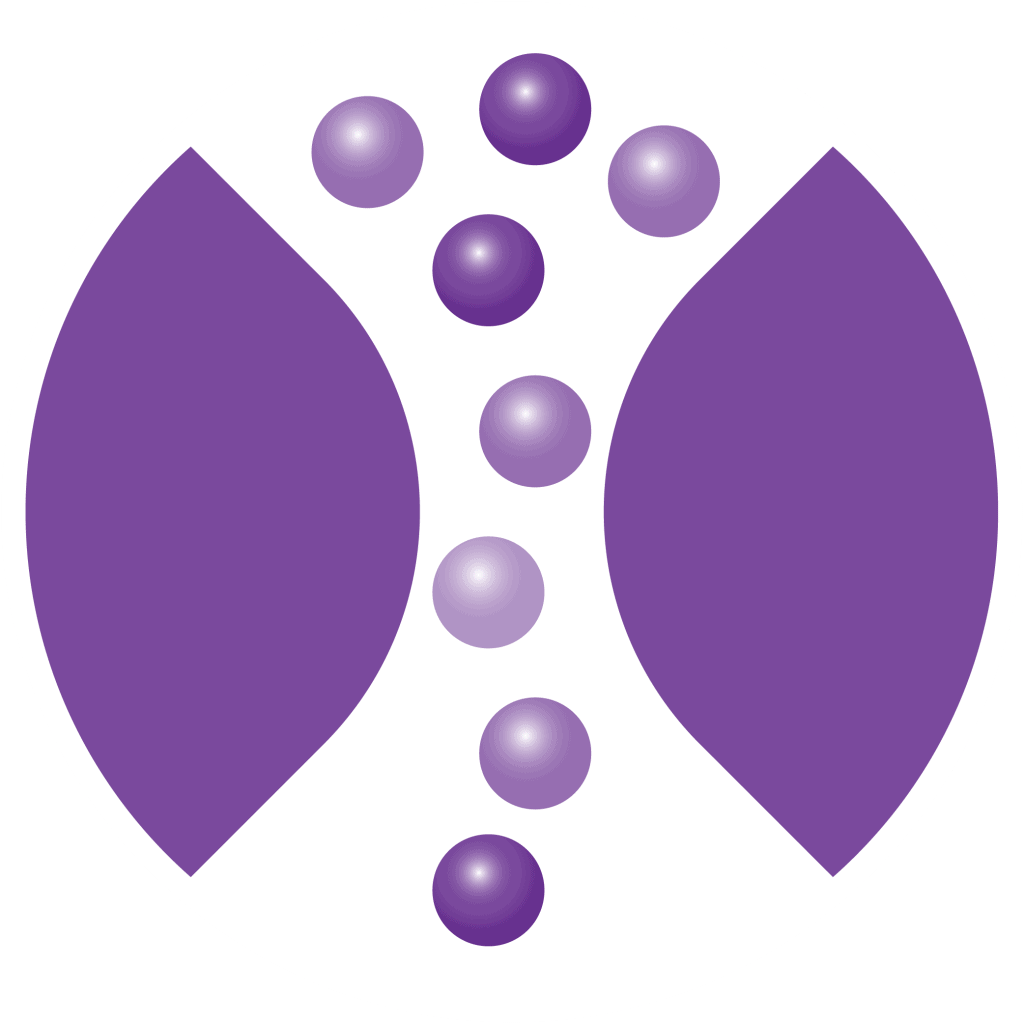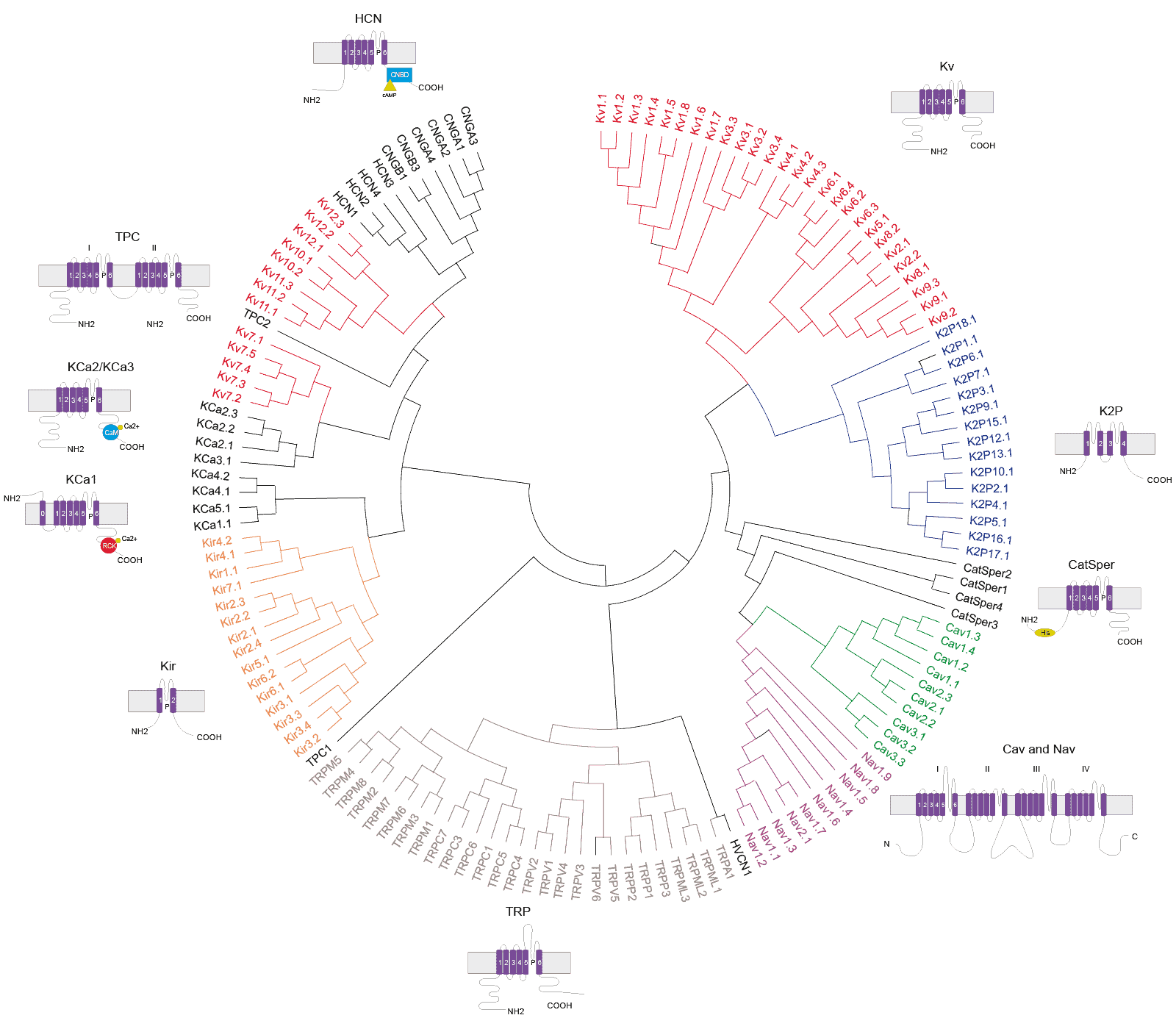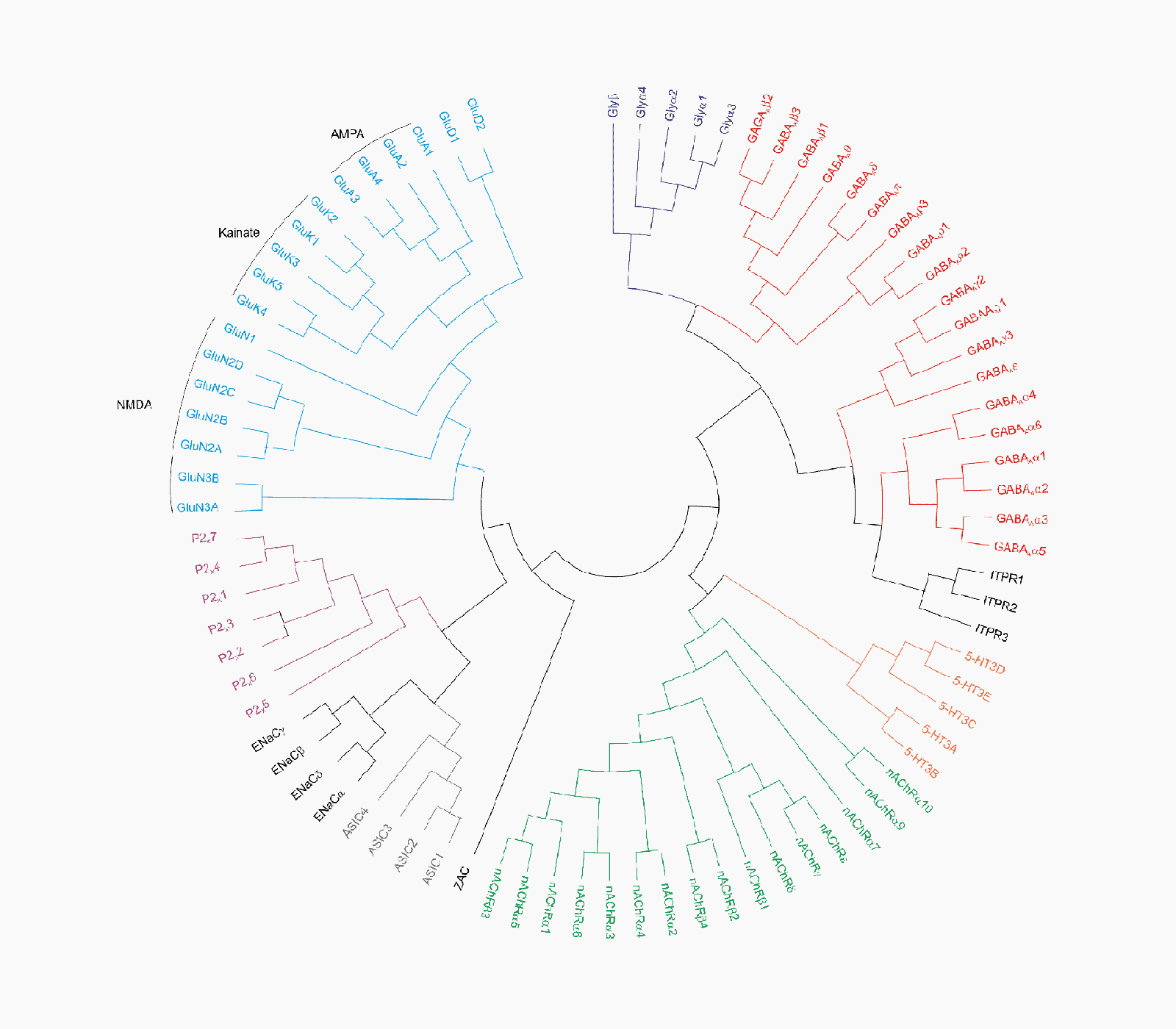Ion Channel overviews

Introduction
Ion channels are large multi-subunit transmembrane proteins that control the flow of charged ions across the cell membrane, leading to changes in cellular excitability (in nerves, muscles, hormone-secreting endocrine cells) and intracellular signalling (e.g. gene expression, hormone secretion, cytoskeleton dynamics). These widespread functions make ion channels important therapeutic targets in a number of fatal and debilitating diseases including cardiac arrhythmia, high blood pressure, pain, stroke, epilepsy, migraine, depression, bipolar disorder, lung disease, autoimmune disorders and diabetes. Ion channels also have proven clinical utility for the development of anaesthetics, muscle relaxants and non-opioid analgesics.
There are over 600 rare mutations amongst the large number of ion channel family members that can lead to loss or gain of function, and these so-called channelopathies have provided compelling genetic validation for ion channels in specific diseases, and in a more general sense as modern drug discovery targets. In addition, ion channels in the heart, reproductive and endocrine systems, and the peripheral and central nervous system are prone to drug-induced modulation which makes them key substrates for safety pharmacology screening and testing for unwanted toxicity that can lead to patient harm, clinical trial failures and withdrawal of new drugs from the market.
Ion channels are broadly divided into voltage- and ligand-gated families, as shown by the family tree dendograms below. Both types of proteins normally exist in a resting state, shown by the red transmembrane structure in the schematic at the top of the page (Metrion’s ‘traffic light’ logo). The multimeric proteins are activated either by a change in membrane potential or the binding of a ligand molecule (shown by the green ion channel schematic), which leads to conformational changes in the 3D structure of the protein and the opening of a central pore with variable selectivity for cations or anions (purple dots), which flow down their electrochemical gradient into or out of the cell and lead to excitation or inhibition of cell function. Finally, the activated channel can proceed to an inactivated (voltage-gated) or desensitised state (ligand-binding) as shown by the yellow structure in the top figure, which turns off the channel activity cycle and allows the protein to eventually return to the resting state in readiness for the next stimulus. All of these ion channel confirmational states have unique structures and putative binding sites for small molecules, peptides, animal venom toxins, and autoimmune and manufactured antibodies that can modulate their activity in disease or as targets of the drug discovery process.
Ion Channel Dendrograms
The Transient Receptor Potential (TRP) gene family
Transient receptor potential (TRP) channels are a family of ion channels distantly related to the voltage-gated superfamilies. TRP channels are expressed in a variety of organisms such as yeasts, worms, flies and mammals, including humans, where they play important cellular functions. Currently, 28 different TRP channels have been identified in mammals and they are grouped by sequence similarity into several subfamilies: TRPC (canonical), TRPM (melastatin), TRPV (vanilloid), TRPA (ankyrin), TRPML (mucolipin), and TRPP (polycystin).
The voltage-gated sodium channel gene family
Selective permeation of sodium ions (Na+) through voltage-dependent sodium (Nav) channels is fundamental for the generation of action potentials in excitable cells such as neurones and muscles. The voltage-gated sodium channel family is composed of nine pore-forming members, which are named Nav1.1 to Nav1.9 and encoded by genes referred to as SCN1A to SCN11A.
The voltage-gated potassium channel gene family
Selective permeation of potassium ions (K+) through voltage-dependent potassium (Kv) channels has an important role in setting the resting membrane potential of cells and repolarising the action potential. The voltage-gated potassium channel family is composed of forty members and they are separated into twelve classes Kv1 to Kv12.
We are continually updating our ion channel overview pages – please keep an eye on this page for further developments.


Let’s work together
What are your specific ion channel and assay needs?
If you have any questions or would like to discuss your specific assay requirements, we will put you directly in touch with a member of our scientific team. Contact us today to discover more.


